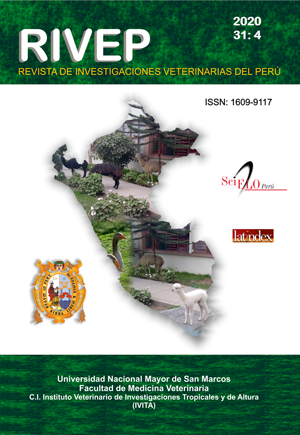Isolation of native Oncorhynchus mykiss bacteria with probiotic potential against Yersinia ruckeri
DOI:
https://doi.org/10.15381/rivep.v31i4.19024Keywords:
resistant bacteria, mortality, production, immune system, troutAbstract
The aim of this study was to identify native bacteria isolated from the intestinal tract of rainbow trout (Oncorhynchus mykiss) with probiotic properties against Yersinia ruckeri. In the study, 48 healthy trout from the hatchery of the Universidad Nacional del Altiplano (Puno, Peru) were used. The intestinal tract of the fry and juveniles was removed, and samples were taken from the intestinal mucosa. The samples were cultured on MRS agar and incubated at 30 °C for 24-48 h. The colonies were identified by their morphology and their inhibitory effect was evaluated in vitro against a Yersinia ruckeri strain isolated from a high mortality outbreak. Three isolates compatible with the genus Lactobacillus and one isolate compatible with the genus Bacillus were identified. These isolates showed inhibition halos greater than 9 mm in diameter against Y. ruckeri.
Downloads
Downloads
Published
Issue
Section
License
Copyright (c) 2020 Wilson Quispe G., Belisario Mantilla M., Alberto Ccama S., Yessica Ortega A., Nieves Sandoval C.

This work is licensed under a Creative Commons Attribution-NonCommercial-ShareAlike 4.0 International License.
AUTHORS RETAIN THEIR RIGHTS:
a. Authors retain their trade mark rights and patent, and also on any process or procedure described in the article.
b. Authors retain their right to share, copy, distribute, perform and publicly communicate their article (eg, to place their article in an institutional repository or publish it in a book), with an acknowledgment of its initial publication in the Revista de Investigaciones Veterinarias del Perú (RIVEP).
c. Authors retain theirs right to make a subsequent publication of their work, to use the article or any part thereof (eg a compilation of his papers, lecture notes, thesis, or a book), always indicating the source of publication (the originator of the work, journal, volume, number and date).



